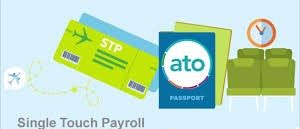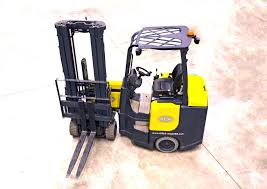Posts Categorized: General
When growth is bad (and running out of cash)

The following is a re-post from February 2015. It has been re-posted as it has been a topic of discussion with a couple of existing clients as well as potential new clients.
With our existing clients, we are planning around how fast they can grow and the issues around including cash flow, cash reserves, need to borrow as well as many other issues including their staffing and training. We have created a clear picture of what sustainable growth will look like, can measure how we are tracking and are dedicating the necessary resources in a planned roll-out.
On the other hand, some potential clients have come to us and they have found themselves, as you could say, in a pickle. Sadly with no proper planning they didn’t see it coming. It has come as a very rude and great shock. Pity their accountants didn’t provide such planning and cash flow assistance.
Last week I queried whether your plan will work and touched upon good and bad growth.
Increasing sales is not the answer to everything. It is not uncommon to see a business solely concentrating on increasing sales fall part if they haven’t ensured the business has the right team and systems in place to support greater turnover.
Worse still, some businesses even fail as they run out of cash due to the increased revenue not being enough to fund greater expenses and the greater amount of money locked up in debtors and stock.
Consider this……
Take a business that doubles its sales from $1,000,000 to $2,000,000 and everything else doubles from:-
- Cost of goods sold from $700,000
- Overheads from $175,000
- Net profit from $75,000 (average tax rate remains at 40%)
- Debtors from $125,000
- Stock from $160,000
- Creditors from $75,000.
Sounds good?
Actually, it’s a disaster.
Why – because the working capital required has doubled from $210,000 to $420,000 whilst the doubling of profit after tax has only generated an extra $150,000 – of which $60,000 will go in tax. What seems to be a new dawn will actually prove to be a nightmare. The business owner in such a case might think they are going forward in the right direction but there is something coming awfully big and fast straight at them!
The problem here is that the owner has concentrated on sales and sales alone. The outcome would be quite different if other key drives such as debtors, stock and creditors turnover were addressed (and for which we have many strategies from our many years of experience and supporting tools).
We were a member of the Principa accountants network (from which this example was generated) as well as other accounting groups that provide tools to assist our clients with cash flow control and planning – and for many other areas as well.
Why not refer to our web page’s article on business improvement potential. Or better yet, why not ring Alex Stewart and make a time to sit down and have an obligation free meeting to discuss how we can help your business.
So again I ask, will your plan work?
Why business planning is important

There is an old saying that if you don’t know where you are going then any place will do.
Business planning is crucial as it focuses one’s attention on how a business has been performing and how that can be improved. Thoughts in the car or shower are brought together and considered in context of all other pertinent matters. It also presents a road map to better performance.
With the start of a new financial year, now is a perfect time to:-
- Re-assess your performance over the last financial year.
- Set goals for the year ahead.
We can assist you this by:-
- Set financial benchmarks by which you can assess your performance.
- Set non-financial benchmarks by which you can assess your performance – such as the number of sales enquiries per week, the conversion rate of those enquiries … and many, many more from our extensive library.
- Show you the effect of changing the key drivers in your business.
- Integrate these budgets into your accounting software.
- Employ other reporting dashboards to track your performance.
- Hold you to account to your stated goals by regularly checking in with you.
Please call us if to arrange a free meeting. The meeting is free so we can gain an understanding of your and needs. Having gained an understanding of your circumstances and needs will enable us to explain the ways in which we can specifically help you.
As Einstein once said – the definition of insanity is doing the same thing over and over again and expecting different results.
Don’t fall that trap and call Alex Stewart now.
Are STP extensions the answer?
Struggling with Single Touch Payroll (STP?
Or have you yet to take action?
There are two things you need to do:-
- Move to a payroll software solution.
- Tidy up your HR records.
We can help you with both.
So whilst there are extensions available, we recommend not relying on them – it just creates more work (and therefore cost) later.
Take the first step right now by contacting us (the first meeting is free).
STP starts next week!

Single Touch Payroll (STP) starts next week!
From Monday 1st July all businesses will be required to report to the ATO each employee’s gross pay, tax and super no later than the day of payment.
Whilst there are extensions available we generally recommend not using them as it only creates more work later – and therefore cost.
If however you need to rely on an extension, then you must have applied for one by week’s end.
Either way, you have to do so something.
We have been taking our clients through the transition journey principally by way of a series of weekly preparatory emails.
If your accountant hasn’t helped you then it is time to change accountants! Contact us below and we can discuss how we can help you.
Last minute tax planning tips
With 30th June fast approaching, here is a list of common tax planning strategies that we have been discussing with clients:-
- Prepaid revenue can be deferred to the extent that it relates to next financial year and where a customer has the contractual right to cancel the contract at any time.
- Buying items such as stationery, printer cartridges, stamps, etc by Sunday 30th June. Those of you who entered the Simplified Tax System (STS) by 30th June 2005 (who are therefore automatically assessed on a cash basis) may wish to pay any bills not due until July like your phone bill, rent, printing and stationery, etc. Paying your accounting fees is also recommended!
- STS taxpayers are now known as Small Business Taxpayers (SBTs). SBTs now include taxpayers with an annual turnover under $10,000,000. As we have previously highlighted, SBTs can claim a full deduction for any assets acquired costing less than $30,000 excluding GST – but note lower limits of $20,000 for assets bought before 29th Jan and $25,000 before 2nd April.
- The $30,000 limit will apply to assets bought ad installed rady for use by 30th June 2020.
- The $30,000 asset write off has also been granted to businesses with annual turnover up to $50,000,000.
- SBT taxpayers can claim half a year’s depreciation on acquired assets that cost more $30,000 – even if the asset is purchased on the last day of the year. If a business owner buys a business asset costing $40,000 today, then they get to claim depreciation of $6,000 in this financial year followed by $10,200 in 2019/20. Buy that same asset in July 2019 and the claim by 30th June 2020 is only $6,000.
- For more on the instant asset write-off, refer to recent blogs titled Parts 1, 2 and 3.
- SBT taxpayers can also claim a full deduction for payments such as insurances, rent and the like which cost more than $1,000 even though the service period runs past 30th June and into the next financial year.
- For those of you who receive this e-mail that are employees or rental property owners, you can claim a complete write off for assets costing less than $300.
- If a property is jointly owned, then you can claim the full cost of assets costing less than $600 (meaning you claim less than the $300 limit each).
- Investors can claim prepayments in full. An investor with a property or share loan can claim a deduction for 12 months prepaid interest. Please note that the ATO requires that for the prepayment to be claimed, one must benefit through a lower interest rate (for which you need to keep proof).
- For those who have already generated a large capital gain, consideration should be given to selling other investments that have an unrealised capital loss. Those with no or minimal employer SGC support should consider making a deductible contribution into superannuation to offset the tax on the capital gain (but speak to a financial planner first).
- If you are about to sell an asset which will generate a capital gain, consideration should be given to selling it after 30th June. This will defer the payment of any capital gains tax liability until after 30th June 2019.
- Companies can accrue a director’s fee which is not payable until the following financial year. Why? – the company gets a deduction in this financial year but the director is not assessed on the income until the following financial year in which it is received. The trick is to document it correctly.
- If you have stock, count it (a separate e-mail will be sent to business clients with stock). As stock can legally be valued differently from item to item and from year to year, it can result in some advantageous outcomes.
- Donations are deductible. It must be a genuine donation so you can’t receive anything in return. Raffle tickets can’t be claimed.
- Our tax planning checklist also considers other items such as writing off bad debts, making Division 7A loan repayments, distributing to a new beneficiary, varing PAYG Instalments, super rule changes that you may benefit from (after receiving financial planning advice) valuing stock by using costs or net realisable selling method. How these and other opportunities are employed depends on your circumstances.
All of the above tax planning tips are explained to our clients in any easy to read Tax Planning Report.
We welcome any query about these tax planning tips but also in respect of your preparation for Singe Touch Payroll (for which our clients have been receiving weekly preparatory updates ahead of the start date of 1st July 2019).
$30000 asset write-off limit
So what if you want to buy an asset costing more than $30,000 (ex GST)?
Well as a small business, you will be able to claim 15% depreciation on the cost of the asset. So a $50,000 asset bought today will still generate a $7,500 tax deduction in the 2019 tax year (and $12,750 next year).
Buy the same asset on say 7th July, and your claim for next year is only $7,500.
And you still may be able to write-off the balance in the 2020 year for an asset costing more than $30,000. The $30,000 limit also applies to the undepreciated pool balance. We had one client buy a vehicle for $35,000. Come July 1 2019, the pool balance will be $27,500 (as that is the only asset they are depreciating). They can write off the balance of the car in the 2019/20 year.
Please refer to our three part series of 21 tips and traps for the instant asset write-off. Or better yet, call us on 9899-7511 to discuss your situation and opportunities.
STP – changes at the top
It came as a personal surprise to see that the super impressive head of Single Touch Payroll (STP) at the ATO resigned on Friday. He has done so just two weeks before some 700,000+/- small businesses are required to report wages at the time of payment.
What are we to make of that?
As of two weeks ago, not even 120,000 businesses in the country were registered for STP. One can only therefore conclude that the vast majority businesses will not be ready for STP come 1st July. That is just 2 weeks from today.
In part, this is not really surprising. STP is the biggest operational change since GST. Moreover, it relies heavily on public accountants being able to help all of their clients. And the reality is that the majority of public accountants haven’t been able to meet their 2018 tax lodgement program and are drowning in overdue Tax Returns. They simply don’t have the time and resources to support what is required to implement STP.
At Maggs Reid Stewart, we are progressively taking our clients through a series of weekly preparatory tasks. And as part of this process, we are guiding clients to clean up their HR systems.
If you are struggling with STP and/or your accountant is not helping you, then please call us. And do so today because this is not something you can attend to on the first pay day in July.
Super contribution warning
A quick super contribution warning.
In order to claim a tax deduction for a personal or employer super contribution, it must be paid by year end.
This year is a bit of a trap with June 30 falling on a Sunday.
Another trap is that I just read that the ATO’s own employer super clearing house requires payment to be made by the close of business on Monday 24th June. Pay later than that and the contribution will go into the next financial year. That’s a real problem if you have retired and are aged over 65 as you will thereby breach the work test rule in the first week of July 2019.
Some clearing houses and super funds close off earlier than the 24th. Make sure you now what you cut-off dates are.
$30,000 asset write-off – Part 3 of 3
In our last of three blogs, we look at another 7 tips and traps in respect of claiming the $30,000 instant asset write-off.
- You can only claim the business portion on an asset that is used both for business and privately – such as a car or lap-top.
- That said, one can deduct the whole cost of cars provided the Fringe Benefit Statutory Formula method.
- If your business has current or carried forward losses in excess of your intended asset purchase(s), then your business will not gain any tax saving in this financial year.
- The $30,000 threshold also applies to the written down value of the depreciable (general pool) assets. If their collective written down value is under $30,000 on 1st July 2019, then the balance can be claimed in full in the 2019/20 year. For 2018/19, the balance can only be written off if it was less than $20,000 on 1st July 2018.
- It’s assessed on an item by item basis – so a business can buy 50 computers and deduct the lot!
- I should point out that the threshold is due to fall back to $1,000 come 1st July 2020. They may not happen though as it has already been extended multiple times.
- If you are thinking of buying an asset under finance do so quickly. Post Royal Commission, it is far from easy as it once was to obtain finance. Moreover, the whole process is not as quick as it once was – which may mean you are not in possession of your asset by Friday 28th June. We hasten to add though that we can put you in contact with financiers. And beware of glitzy app based products as their rates tend to start above credit card rates.
Please time to read the other 14 useful tips and traps in Parts 1 & 2 of the $30,000 instant asset write-off. Or better yet, call us on 9899-7511 to discuss your particular situation.
$30,000 asset write-off – Part 2 of 3
In our second of three blogs, we look at another 7 tips and traps in respect of claiming the $30,000 instant asset write-off.
- Your small business must own the asset. Your business either needs to pay for it or finance it by a loan, hire purchase or by way of a chattel mortgage contract. Assets that your business leases from others do not qualify for the write-off (as one does not own the asset until the final payment is made or the lease contract is paid out early).
- The incentive also doesn’t apply to assets that are leased by your business to others.
- It’s not about when you buy the asset. Your entitlement to claim is based on when you held the asset first ready for use. So for assets you need to have installed, it is not when you buy it; it is when you can first use it.
- Make sure you when buy an asset to have the installation date agreed upon.
- Installation and delivery costs comprise part of the cost of the asset.
- When buying a car, make sure the delivery date will be before July.
- If you trade-in an asset, it is the cost of the new asset that qualifies. So if your business buys a car for $40,000 and trades in an old car for $8,000, there is no entitlement as the cost of the new asset exceeds $30,000.
Please keep come back to look at third listing of tips and taps in respect of claiming this valuable tax concession. In the meantime, we welcome any questions you may have – call us on 03 9899-7511.


